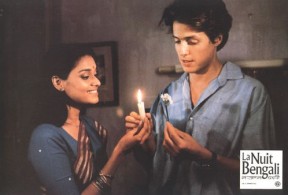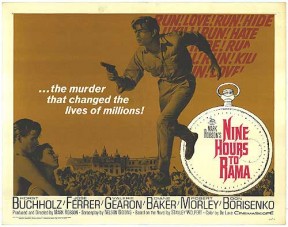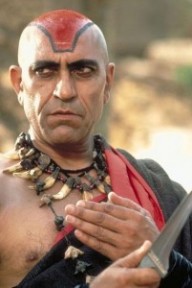In the Golden Age of Hollywood, India represented little more than a mystical land of Rajahs, snake charmers, nubile princesses and elephants. Cannot really blame them – our own cinema of the time was filled with Rajahs and princesses of our own! In Hollywood, this image held sway till as late as the 60s, with films like Tarzan Goes to India (a Tarzan adventure set in India starring Simi Garewal and Feroz Khan, where our jungle boy meets his friend, the Rajah and saves the royal elephants) or even Octopussy, where 007 pays a visit to India, hops on to a palace and romances a princess. Over the years, with the Slumdogs and Salaam Bombays, the focus has shifted from the riches to the rags. Be that as it may, we’ll list here three major Hollywood/European productions based on India that were banned here.
1. La Nuit Bengali/The Bengali Night (1988)
Well, let me floor you with the star cast of the film: yes, that is Hugh Grant in the lead, and Supriya Pathak as his lady love (yes, the same lady who plays Ranbir’s mother in Wake Up Sid, or Hansa in Khichdi, or lip synced to ‘Sasural Genda Phool’ in Delhi 6!). The supporting cast? Soumitra Chatterjee, Shabana Azmi and John Hurt…was this a Casting Coup or what?
The story? That’s the next interesting part – it’s about a westerner, curious about Indian Spirituality (Grant) , who enjoys a leading Indian intellectual’s (Soumitra) hospitality, ends up madly in love with his daughter (Supriya), thereby earning the ire of his host, and being thrown out of the house! Sounds familiar? Well you guessed it right – Hum Dil De Chuke Sanam (1999) was a straight lift from this film and the book it is based on.
Now the above story happens to be a fictionalized account of the misadventures of the prominent Romanian philosopher Mircea Eliade , who came to India to learn Sanskrit, among other things, under the tutelage of Surendranath Dasgupta a leading Sanskrit scholar and intellectual of the time. He met and fell hopelessly in love with Maitreyi Devi, his daughter. When Mircea encountered the same fate as our hero above, he wrote a book on this experience entitled La Nuit Bengali (The Bengali Night) which contained semi-graphic descriptions of some intimate moments shared with Maitreyi. They didn’t meet until years later as Maitreyi’s husband helped her in finding him (again, HDDCS ripped off straight from here) – as fate would have it, by that time, Eliade had gone blind. Many years later, when Maitreyi Devi heard of the making of this films, she sued the producers and the film was banned in India. Read the whole story here.
2. Nine Hours to Rama (1963)
This one was an adaptation of the eponymous book by Stanley Wolpert, detailing the planning and preparation of Nathuram Godse, leading up to his assassination of the Mahatma. Released in 1962 and 1963 respectively, both the book and the film were banned in India for obvious reasons. The film was partly shot in India, with most Indian roles being portrayed by Europeans, the only exception being that of Gandhi, who was played by an unknown Indian actor named JS Casshyap, who, going by his Imdb profile, had written dialogues for scores of Bollywood films from the 30’s to the 50’s.
3. Indiana Jones and the Temple of Doom (1984)
I am yet to see this one. Grabbed a lot of national media attention in the early 80’s, among other reasons, owing to the fact that Amrish Puri was playing a major role, that of Mola Ram. The ‘other reason’ was the unfairly brutal and unfavourable depiction of the Hindu religion, and the script was also accused of being too ‘racist’. Having been denied permission to shoot in India, the crew had to shoot in Sri Lanka.
Amborish Roychoudhury is a film enthusiast and a film buff who lives within this outer shell of a finance professional. He is extremely passionate about films, comics, old Hindi film music, detective fiction, technology and the like – He worships many deities but works for the devil! Another Blog that he write occasionally is http://amborish.posterous.com/ or just go to amborish.com









Interesting number one. I need to find a copy of both Bengal Nights as well as It Does Not Die now.
A movie/series which has been banned before it was even born is Midnight’s Children. India won’t grant filming permission, and Srilanka revoked permission.